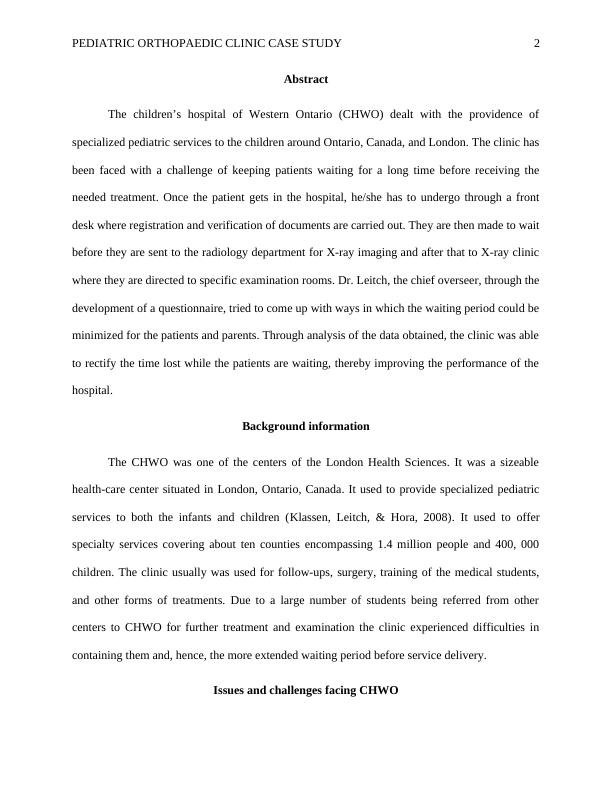Pediatric Orthopaedic Clinic Case Study
Dr. Kellie Leitch, Chief of Paediatric Orthopaedic surgery at the Children’s Hospital of Western Ontario, is concerned about long wait times in the clinic and the impact on patients and staff. She is also aware of the economic impact of healthcare wait times on national productivity.
7 Pages1058 Words257 Views
Added on 2023-06-11
About This Document
The case study discusses the challenges faced by the Pediatric Orthopaedic Clinic at the Children’s Hospital of Western Ontario (CHWO) and how they were resolved. The major issue was the extended waiting period for patients. The article suggests ways to minimize the waiting period and improve the performance of the clinic.
Pediatric Orthopaedic Clinic Case Study
Dr. Kellie Leitch, Chief of Paediatric Orthopaedic surgery at the Children’s Hospital of Western Ontario, is concerned about long wait times in the clinic and the impact on patients and staff. She is also aware of the economic impact of healthcare wait times on national productivity.
Added on 2023-06-11
ShareRelated Documents
End of preview
Want to access all the pages? Upload your documents or become a member.



